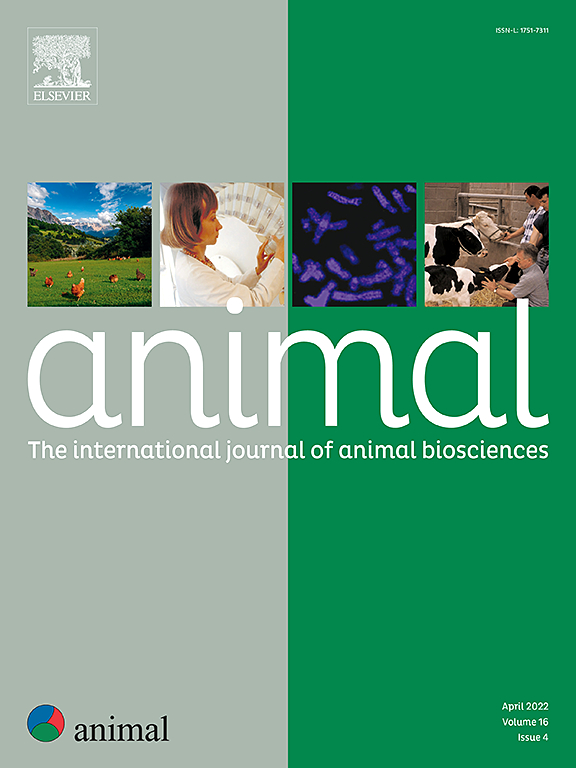Short communication: Including genomic information increases accuracy of breeding value estimation in a small outdoor organic pig population
IF 4
2区 农林科学
Q1 AGRICULTURE, DAIRY & ANIMAL SCIENCE
引用次数: 0
Abstract
To optimise organic pig breeding, we studied the effect of including genomic information for predicting breeding values (EBVs) in a small organic pig population. The recorded traits were the number of functional teats (n = 16 494), BW at birth (n = 36 995) and on day 10 (n = 29 744), and litter size on day 0, 4, or 11 (n ≈ 5 900 litters). Genomic information from 18 929 SNPs was available for 1 394 pigs, including Landrace sows and boars, and Yorkshire x Landrace crossbred sows. Throughout the study, a purebred- and crossbred correlation of 1 was assumed. Univariate mixed models that either included pedigree information or both pedigree and genomic information were used to estimate parameters and EBV. The prediction accuracy of the EBV was based on a forward prediction of data from the final 11 months of data. For the number of functional teats, the direct additive genetic component was considered, whereas for the other traits, the maternal genetic component was considered. The accuracy of predicting EBV for individuals without their own phenotype increased for all traits when genomic information was included, especially when the heritability was low. In conclusion, including genomic information can improve EBV prediction accuracy, which can optimise the genetic improvement in small breeding programmes.
求助全文
约1分钟内获得全文
求助全文
来源期刊

Animal
农林科学-奶制品与动物科学
CiteScore
7.50
自引率
2.80%
发文量
246
审稿时长
3 months
期刊介绍:
Editorial board
animal attracts the best research in animal biology and animal systems from across the spectrum of the agricultural, biomedical, and environmental sciences. It is the central element in an exciting collaboration between the British Society of Animal Science (BSAS), Institut National de la Recherche Agronomique (INRA) and the European Federation of Animal Science (EAAP) and represents a merging of three scientific journals: Animal Science; Animal Research; Reproduction, Nutrition, Development. animal publishes original cutting-edge research, ''hot'' topics and horizon-scanning reviews on animal-related aspects of the life sciences at the molecular, cellular, organ, whole animal and production system levels. The main subject areas include: breeding and genetics; nutrition; physiology and functional biology of systems; behaviour, health and welfare; farming systems, environmental impact and climate change; product quality, human health and well-being. Animal models and papers dealing with the integration of research between these topics and their impact on the environment and people are particularly welcome.
 求助内容:
求助内容: 应助结果提醒方式:
应助结果提醒方式:


